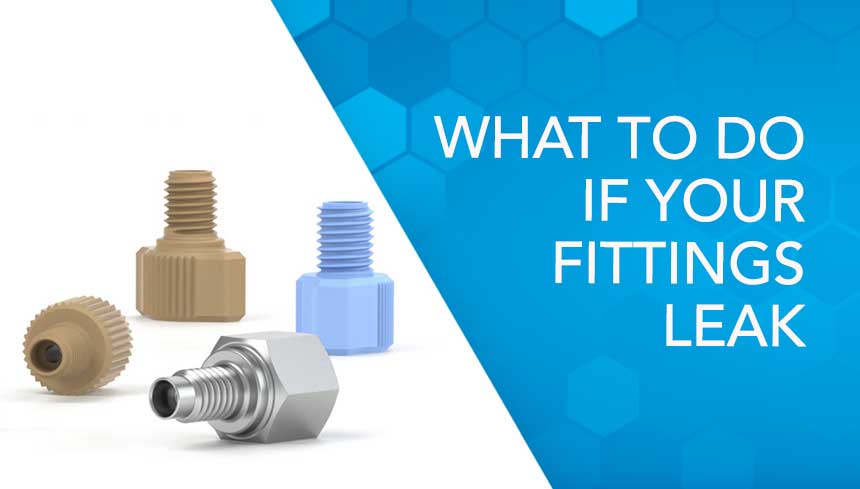
No one wants leaks in their fluidic flow path. Leaks can cause bubbles, low pressure or no pressure and loss of fluid. All of these things can compromise you flow path and results. Leaks are typically caused by fittings—from using improper fittings
to chemical capability issues.
Telltale Signs of System Leaks
Before you see the first drip of mobile phase, your system can warn you that a problem exists.
The most common signs of system leaks are:
- No flow or pressure
- Pump pressures up, but there is no flow
- Noisy baseline, and
- Baseline drift
While all of these symptoms could also indicate problems unrelated to leaking connections, it is always easiest to start there. Not only are leaking connections usually easy to repair, they are also typically the least expensive repair option.
What to do if your fittings leak
- Check to make sure your tubing is seated properly. When using universal Fingertight fittings, the tubing must bottom out in the receiving port before the nut and ferrule are tightened. If a gentle tug disengages your tubing after the fittings have been tightened, loosen the nut and ferrule and try again.
- The fitting may not be tightened enough. Stainless steel nuts and ferrules require a wrench to tighten them, even after repeated use. Fingertight fittings also require a good tightening torque; however, using tools incorrectly may lead to over-tightening
and damage to the fitting. As such, tools should be used with caution on Fingertight fittings.
- You may be using incompatible fittings. Make sure you are using a nut and ferrule that are compatible with each other and with the components of your system. To avoid this problem and ensure compatibility, use IDEX Health & Science universal fingertight fittings. Because
the ferrule does not permanently swage onto your tubing, a Fingertight can be used repeatedly for several cycles in most systems.
- Check the condition of the sealing area. After repeated use, a fitting’s “sealing area (at the tip of the fitting or ferrule), will gradually become deformed to the point of being incapable of creating a seal. As such, it is a good idea to keep an extra supply of the fittings you are using so you can replace them quickly and avoid unnecessary downtime.
- Check the receiving port for damage. Sometimes a leaking connection has nothing at all to do with the nut and ferrule, but with the receiving port. Ports that have had stainless steel fittings swaged into them are especially susceptible to damage. Check the receiving port for visible burrs or scratches and replace if necessary.
- Evaluate chemical compatibility. Using fittings made of material incompatible with your mobile phase is a sure way of creating leaks. Learn more about chemical compatibility.
View our Fittings 101 guide to get more tips and insights on fittings


